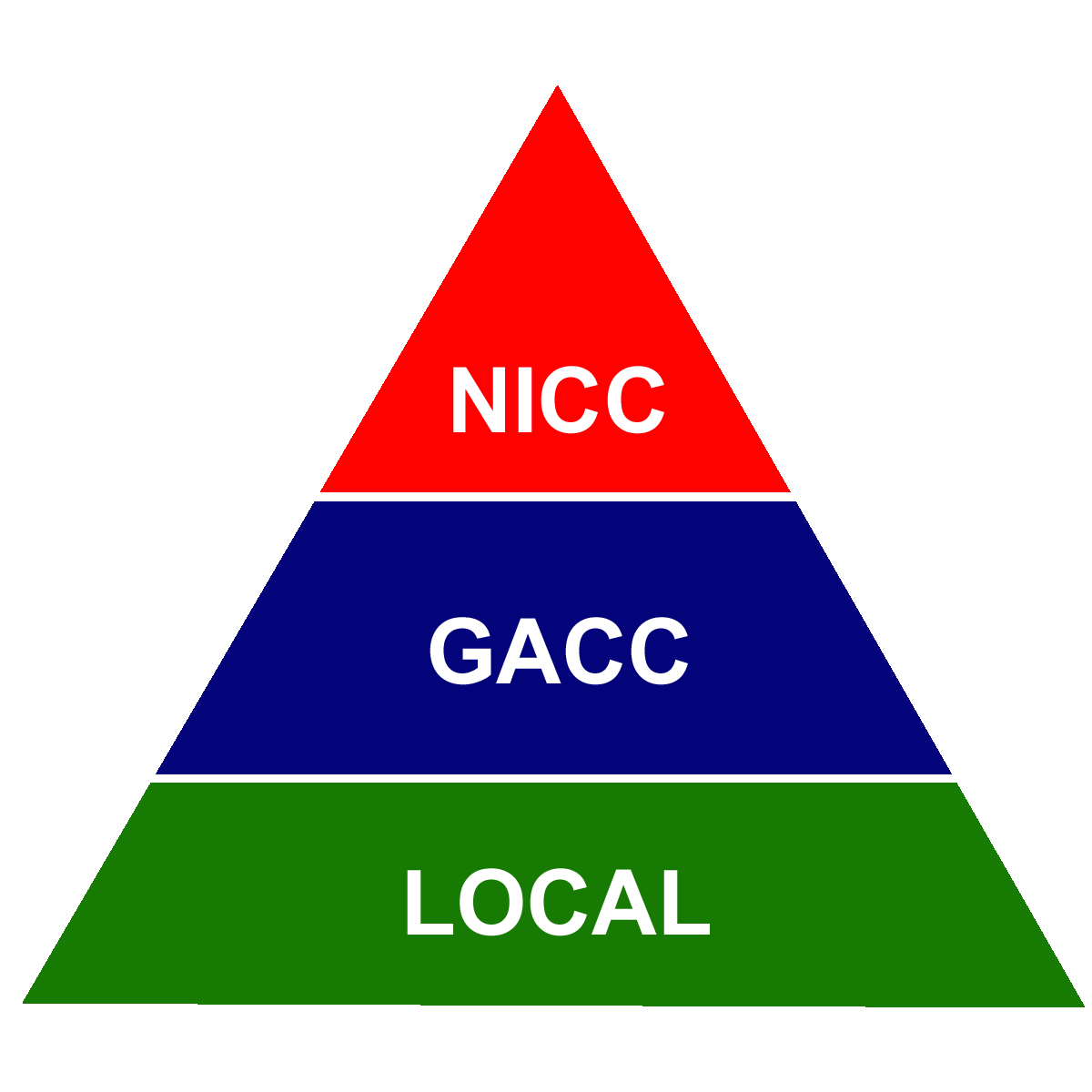The National Dispatch Coordination System is based on a three-tier response model. There are over 250 local dispatch centers nationwide that report to ten Geographic Area Coordination Centers (GACCs). Those GACCs report to the National Interagency Coordination Center (NICC.) The three-tiered system allows firefighting resources to be mobilized from the East Coast to the West Coast, and vice versa. Firefighting resources are divided into five functional areas.
Aviation: Fixed and rotor wing aircraft provide a variety of support to wildland firefighters on the ground. Helicopters can be used to drop water, complete reconnaissance missions, transport firefighters, and deliver resources to the fireline. Fixed wing aircraft can be used to drop retardant, provide aerial supervision, and complete mapping missions.
Overhead: As firefighters progress in their careers, they develop single resource qualifications and can be mobilized to wildland fires individually. Incident Management Teams and various types of suppression modules are also considered overhead.
Crews: Hand crews normally consist of 18-20 crewmembers and can be used in different capacities on the fireline. The most common crews are classified as Type 2 Crews, Type 2 IA Crews, and the elite Interagency Hotshot Crews. Crew typing is based on capabilities, years of experience, and individual resource qualifications.
Equipment: Fire managers utilize a variety of firefighting equipment on wildland fires. The most common types of equipment are engines, water tenders, and dozers. More specialized equipment such as excavators and feller bunchers are also utilized.
Supplies: Fifteen federal National Incident Support Caches are strategically located across the United States and can provide firefighters with everything from hand tools to telecommunication equipment. About 85% of cache supplies are returned, refurbished, and put back into the cache inventory for future mobilization.









